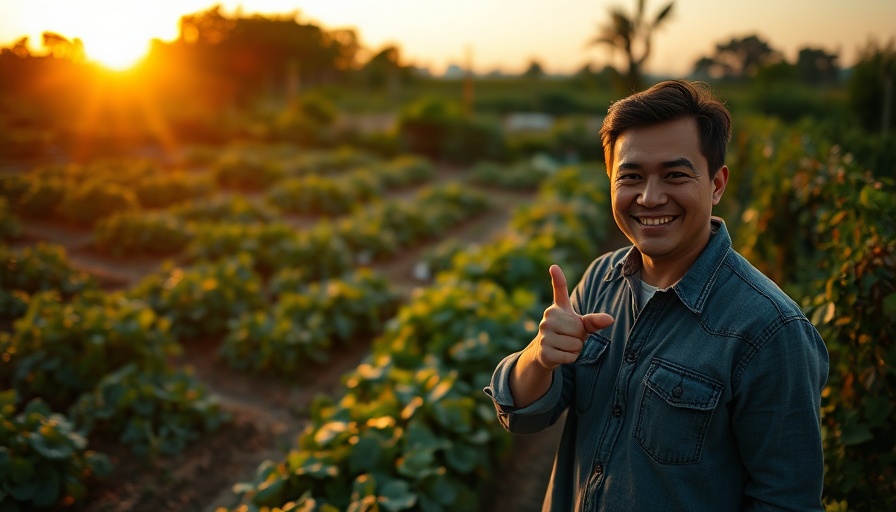
Embrace the Season: The Best Crops to Direct Sow in June
As June rolls in, the days stretch longer and warmer, inviting every gardening enthusiast to get their hands dirty and embrace the beauty of planting. Whether you have a sprawling backyard or just a cozy balcony, June presents a unique opportunity to plant a diverse array of crops that can flourish with the summer sun. Here are twelve crops perfect for direct sowing this June, designed to inspire everyone, from beginner gardeners to seasoned green thumbs.
The Delights of Vegetable Gardening
June is a prime time to start your vegetable garden! Crops like beans and cucumbers thrive under the summer sun, and they’re not only delicious but also incredibly rewarding to grow. Imagine the joy of stepping into your own backyard and harvesting fresh, homegrown produce for dinner!
Among these vegetables, snap peas are particularly appealing. They grow quickly and can provide a lush harvest early in the summer. Similarly, carrots and radishes are excellent choices as they germinate swiftly, giving you something to look forward to as the summer progresses. Pair them with the vigorous growth of zucchini for a colorful and productive garden.
Flowering Joys for Every Garden
Let’s not forget the joy of flowers! June is a fantastic time to sow various flower seeds that will bloom beautifully throughout the summer. Bright sunflowers can add a vibrant touch to any garden landscape, and they are a hit with pollinators. Meanwhile, the delicate nature of zinnias and marigolds can provide both beauty and pest control in your vegetable plots.
When growing flowers, consider their layout as part of your garden design. Mixing perennial flowers with annuals allows your garden to maintain color and charm even beyond the summer months.
Herb Gardens for Fresh Flavors
Imagine stepping outside to harvest fragrant herbs for your meals. June is an excellent time to direct sow herbs such as basil, cilantro, and parsley. Not only do they add flavor to your dishes, but they also attract beneficial insects that help in pollination. Consider dedicating a corner of your garden, or even a pot on your kitchen windowsill, for an herb garden!
Greens That Keep Giving
Don’t underestimate the power of greens! Crops such as lettuce and spinach can be sown throughout June, providing a delicious supply of leafy greens right when you need them most. For smaller spaces, consider containers or vertical gardening techniques to maximize your growing area. Gifting these leafy greens to your friends and family adds a thoughtful touch and promotes community bonding.
Understanding Garden Tools and Supplies
As you embark on your gardening adventure this June, having the right garden tools is essential. Investing in a quality garden hose, gardening gloves, and fertilizer will empower your garden's growth. Check out local garden centers or garden shops to see what materials you need for a flourishing garden this summer.
Caring for Your Garden: Tips and Tricks
Once you've planted your crops, garden care becomes crucial. Regularly checking soil moisture and pests ensures that your plants remain healthy and productive. Utilizing organic gardening methods can give you peace of mind as you cultivate a thriving landscape.
Long-Term Rewards of Gardening
Gardening is not just about immediate yield; it’s about forging a connection with nature. The act of caring for plants can bring quiet joy, relaxation, and a sense of accomplishment as the days go by. Whether you're tending to a backyard garden, a small plot of herbs, or a lovely flower bed, the experience enriches your life in innumerable ways.
Get Involved and Cultivate Community
This June, roll up your sleeves and get planting! Whether you're a beginner or a seasoned gardener, the simple act of sowing seeds can weave stronger community ties. Share your gardening successes and failures, attend local gardening workshops, or simply engage in conversations with fellow garden enthusiasts.
Gardening is not just a hobby; it's an experience that brings people together, fosters growth (both plants and friendships), and ultimately creates a sense of belonging. So, what crops will you sow this June?
 Add Row
Add Row  Add
Add 




Write A Comment